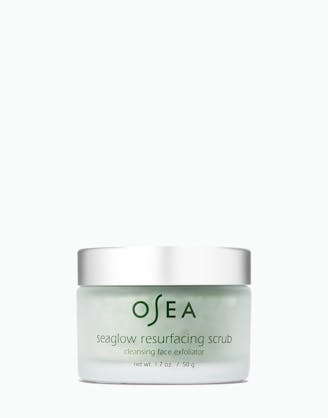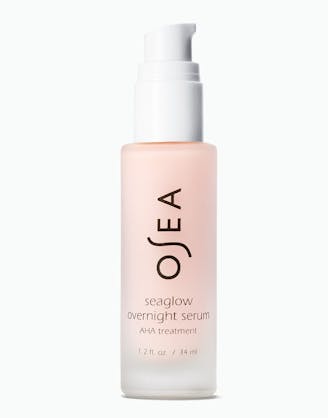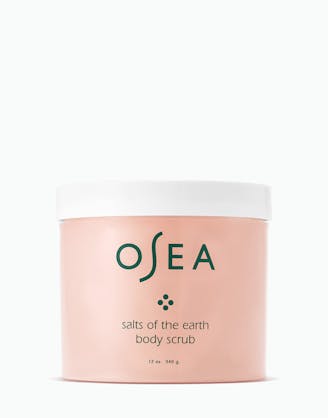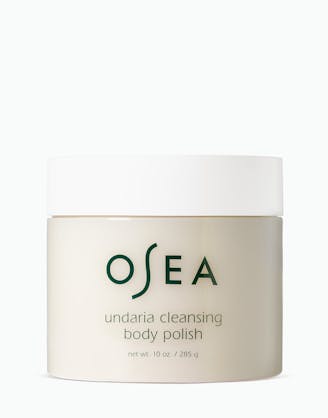As you shop for new additions to your skincare routine, you’ll come across numerous physical and chemical exfoliants. If that brings back memories of harsh scrubs from days gone by, it can be tempting to write these products off. But don’t dismiss them—exfoliation is essential in both face and body skincare routines. This guide highlights some exfoliation best practices to reduce the risk of discomfort or irritation.
Why Exfoliate?
Although you can’t see it, your skin sheds thousands of dead cells each minute to kick-start regeneration. The new cells that take over contribute to a vibrant, clear complexion and make wrinkles and discoloration less noticeable.
It takes skin cells at least 28 days to complete the regeneration process¹. In the meantime, stubborn dead cells might stick to your face and body. The buildup of dead skin cells can clog pores, dull the complexion, and create a barrier that’s tough for skincare products to penetrate.
Physical vs. Chemical Exfoliation
Although the end goal is the same, how physical exfoliants remove dead skin cells is quite different compared to how chemical exfoliants work. Physical exfoliants are manual tools and skincare formulas containing mildly abrasive granules that remove dead skin cells. Chemical exfoliants contain enzymes, alpha hydroxy acids (AHAs), beta hydroxy acids (BHAs), or polyhydroxy acids (PHAs) that dissolve dead cells by unbinding the skin cell bonds.
OSEA’s Facial Exfoliants
With both physical and chemical ingredients, the Seaglow Resurfacing Scrub is an effective exfoliant for facial skin. This formula features volcanic sand that manually removes dead skin cell buildup. Glacial oceanic clay and bentonite rid skin of dirt and the overabundance of oil that leaves skin greasy and contributes to breakouts. Flower acids dissolve dead skin cells, while kiwi AHA-Infused Rice Microparticles—a physical and chemical exfoliant hybrid—improve texture².
The Seaglow Overnight Serum AHA Treatment is also a standout formula for face exfoliation. It contains phytic acid and alpha hydroxy acids that dissolve dead skin cells to aid cell turnover. In just a matter of weeks, skin looks and feels smoother and more even³.
OSEA’s Body Exfoliants
Body skin is thicker and less fragile than facial skin, so plan to use different exfoliants to revitalize it. Body skin can withstand the scrubbing action of the Plant-Based Body Brush. This manual tool uses sisal fibers to address the rough texture caused by dead skin cells. Dry brushing is a simple process that can be part of an indulgent at-home spa day or your weekly skincare routine.
The Salts of the Earth Body Scrub is also a good choice for body exfoliation. The salts, including pink Himalayan and red Hawaiian sea salts, remove dead skin cells, while shea butter and plant oils leave the skin soft and supple.
Although our new Undaria Cleansing Body Polish is gentle on the skin, it’s also tough enough to battle dead skin cells thanks to the Kiwi AHA-Infused Rice Microparticles and pumice it contains. You can enjoy skin that looks smoother and brighter without feeling stripped⁴.
How to (Carefully) Exfoliate
Having too much of a good thing is possible, so don’t exfoliate more than twice to three times a week, or as needed. Limiting the practice can help avoid skin irritation, inflammation, and flakiness. These are tell-tale signs of over-exfoliating, which can lead to dryness and tightness over time.
It’s also important to consider your skin type⁵. For example, physical exfoliation might be better for sensitive skin, as it’s possible to control the intensity of the scrubbing. Dry and oily or blemish-prone skin benefit from chemical exfoliants that clear away flaky skin and pore congestion, allowing other skincare products to penetrate properly. If you have balanced, combination, or mature skin, you’re in luck—both physical and chemical exfoliants are likely to work well.
No matter which exfoliant you choose, wash your face and body thoroughly before this step. After exfoliating, wait a few minutes before applying additional skincare products. If you use a physical exfoliant, massage it on the face and body skin for a minute or so before washing it off. Remember to pat your skin gently to dry off.
How to Care for Skin Afterwards
Exfoliating might seem like a one-and-done step that cleans and polishes, but your skin still needs some attention afterward. This care comes in the form of moisturization, as exfoliation can take away some of the skin’s natural oils as well as the dead cells. Moisturizers and body oils rehydrate to prevent the dryness, itchiness, and tightness associated with freshly exfoliated skin. When skin is hydrated, it’s easier to control oil production, as sebaceous glands won’t provide more sebum to prevent dryness. Hydration also keeps the moisture barrier intact, which helps the moisture stay in your skin.
Before you go outside, remember to apply sunscreen. Protecting the skin from UVA and UVB rays and skin-harming external forces is necessary to prevent photodamage—regardless of how often you exfoliate. Exfoliating eliminates the top layer of dry skin cells, so applying sunscreen will protect the sensitive skin while it recovers.
Citations
Walters, M. (11 February 2022). Boost Your Skin’s Regeneration Process for a Glowing, Vibrant Complexion. Healthline. Retrieved on October 13, 2023, from https://www.healthline.com/health/skin-regeneration
Based on a third-party consumer perception study conducted over 1 week on 35 women ages 25 to 50.
Based on a third-party consumer perception study conducted over 4 weeks on 32 women ages 37-65.
Based on a third-party consumer perception study conducted over 1 week on 33 women ages 35 to 60.
Hopp, D. and Metrus, L. (21 September 2023). This Is the Exfoliator You Should Be Using For Your Skin Type. Byrdie. Retrieved on October 13, 2023, from https://www.byrdie.com/exfoliate-skin-type





